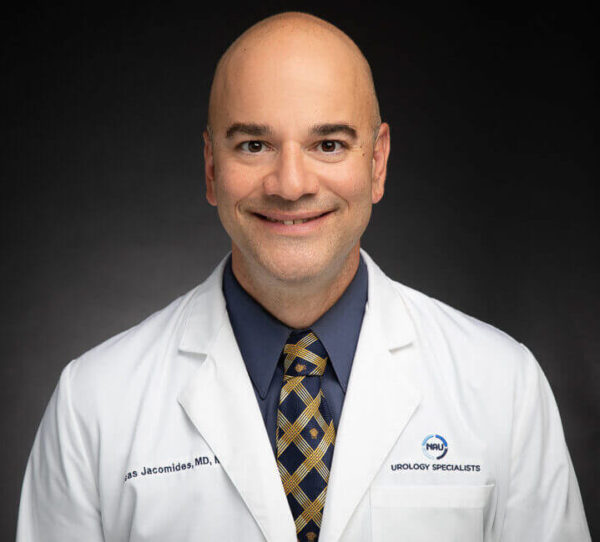
What is transurethral resection?
Transurethral resection of the prostate, or TURP, removes portions of the prostate gland via surgery. However, there are no incisions made on the patient’s outer skin. Instead, the doctor uses a resectoscope, a thin tube inserted into the tip of the penis. This device has a loop of wire and a camera that allows the doctor to see internally.
Surgery is performed by heating up a wire loop with electricity and cutting up sections of the prostate blocking the urethra and not allowing the bladder to empty. It is the Gold Standard of BPH therapy under which all other therapies are tested.
Postoperatively a catheter may be placed into the urethra either for 1 night or 1 week. Most patients are admitted for 24 hour observation.
Not all patients are suitable or eligible for TURP. Our doctors discuss various options for treating BPH during in-office appointments.
What should I expect during the transurethral resection surgery?
Patients are anesthetized during TURP and may either be conscious with a spinal anesthetic or unconscious under a general anesthetic but will not feel any pain during the surgery. The surgery itself takes between one and two hours and takes place in a hospital.
If you are receiving transurethral resection surgery, we have several important guidelines. We generally recommend that patients stop certain prescription drugs, including blood thinners, ibuprofen, and aspirin, several days prior to the procedure.
You will need to fast for 8 to 10 hours prior to surgery. You will also need someone to accompany you to the surgery, as you will be unable to drive home on your own. Patients will either go home after surgery or be admitted overnight for observation.
What is the recovery time?
Postoperative care for TURP patients includes remaining in the hospital for an additional one or two days after the surgery. You will receive an antibiotic prescription to guard against infection and will have a catheter inserted to facilitate the flow of urine. The catheter is usually removed within a couple of days, once the inflammation surrounding the surgery site goes down.
Patients who receive TURP are typically not able to do any strenuous activity for several weeks after surgery, and it is highly recommended that you take several days or weeks off work after your hospital stay, if possible. Refraining from exercise and other physical activity will greatly accelerate your healing time, and engaging in it could hinder your results or cause additional damage.
Blood in the urine can occur immediately following surgery, but should not last for longer than a few days. If the blood appears to be about the consistency of ketchup, you may have a blood clot and it is important to notify your doctor immediately.
It is also normal to have some pain during urination or to have the urge to frequently urinate. This should subside within the first one to two months post-surgery. Your doctor may also prescribe a stool softener to prevent constipation, as straining during a bowel movement could disrupt the surgery site.
The doctor will discuss any additional lifestyle modifications when reviewing your treatment plan with you, but you should expect not to have sex for four to six weeks, to drink excess water and foods high in fiber, and not to drive until you are finished taking any medications. Your doctor may also recommend you stay off of certain prescription medications throughout the recovery process.
How successful is TURP and what are the risks?
TURP is a highly successful procedure very often used to treat BPH. Unlike non-surgical procedures which can reduce or eliminate an enlarged prostate for a period of several years, TURP typically reduces BPH permanently.
However, as transurethral resection of the prostate is a surgery, there are risks of ongoing complications or continued discomfort. The most common is retrograde ejaculation, where either very little semen or none at all is released during orgasm. While this issue does not affect the ability to orgasm, it can impact fertility.
Other side effects include urinary tract infections (UTIs) or incontinence. In extremely rare instances, a long-term and potentially harmful condition called TUR Syndrome can occur.
It is important to contact a doctor if you experience any of the following symptoms after surgery:
- Fever
- Inability to urinate
- Signs of blood clotting (thick blood in the urine)
- Blood in the urine that lasts more than two days after surgery
If you are dealing with the symptoms of an enlarged prostate, give us a call. We can diagnose the issue and if you are diagnosed with BPH, we can talk through your options, including non-surgical procedures. If transurethral resection surgery is necessary, we will work with you on preoperative and postoperative plans, and ensure all your questions are answered.















